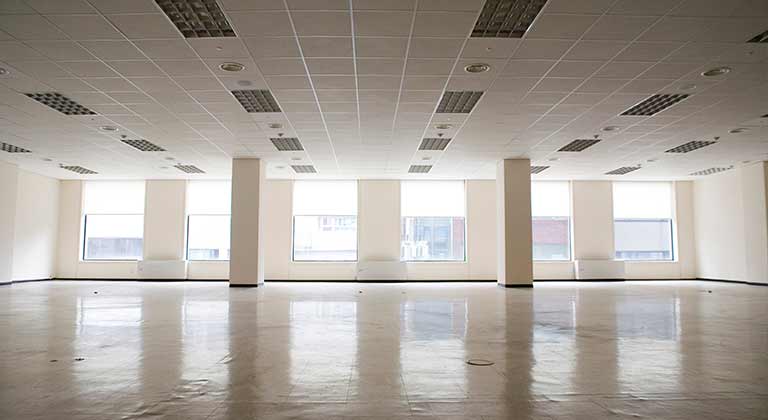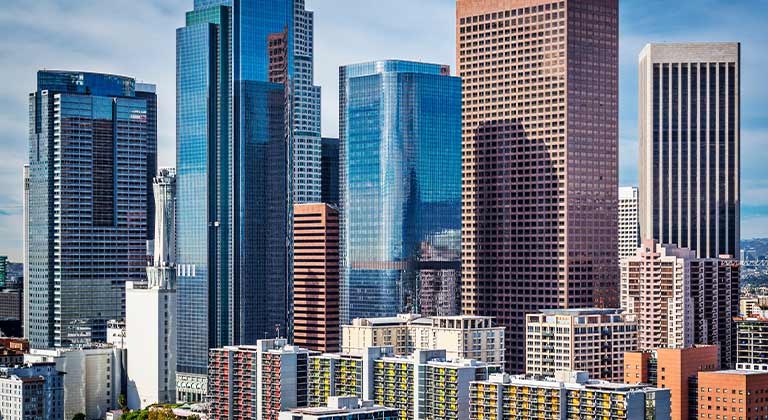The Office-to-Housing Trend
A current hot topic in construction and real estate is the issue of office-to-housing conversions. This is due largely to the historically high levels of office vacancy rates, caused by the COVID-19 pandemic and which have reached peak levels last seen during the 2008 recession.
According to The New York Times (Emma Goldberg, Dec. 27, 2022) there’s almost one billion square feet of available office real estate across the country that’s is in search of a tenant. In Los Angeles County alone, there are 2,300 commercial properties that potentially could create between 72,000 to 113,000 housing units, according to a RAND Corporation report cited in Marketplace (March 13, 2023).
Another factor driving the conversation is the well-documented, high demand for residential housing. Rents remain high and in many areas are actually on the increase while we experience this shortage of affordable housing. And while workers may have vacated downtown buildings in many cities, there remains a demand for potential residents to live in big metropolitan centers.
But is it just a conversation? Hardly. There’s plenty of activity behind the discussion.
According to research conducted by the Commercial Real Estate Development Association, (NAIOP), since 2010, there have been 885 office buildings across the US converted to multifamily residences. According to the real estate group CBRE, between 2016 and 2021, 218 offices across the country were converted, or about 36 each year. Approximately 40 percent of the conversions were for multifamily housing, creating 13,420 apartments. As of Dec. 2022, we have seen a slight increase, with 42 office conversions completed and 217 planned nationally for 2023.
Given the dire current need for more housing, this seems like good progress. So what are the pros and cons for developers and city planners to consider in taking on more of these conversion projects?

Potential Benefits of Office-to-Housing Conversions
- Topping the list are the many advantages of sustainability and the lower carbon footprint required to renovate existing buildings, rather than projects that include demolition and new construction. Reducing new builds is good for the planet: 7% of the world’s CO2 emissions currently come from cement production.
- Of similar benefit to the environment, converting older buildings to a new use will extend the total lifecycle of a building.
- The developer often can anticipate faster completion times and lower material and labor costs than projects involving new construction.
- Converting vacant space to residential use will help to fill the urgent housing need, especially in built-up areas in which undeveloped space is no longer available.
- Building owners will benefit from lease and rental payments in structures otherwise vacant and not generating any income from office use.
- Conversion to residential space can help to return emptied commercial areas to their former vibrancy in many markets, increasing taxes and income generated by businesses (such as retail and restaurants) in areas surrounding unused office space.
- Commercial building renovations can support the trend of converting previously business-focused districts to multi-use, live/work/play areas, and prevent them from turning into ghost towns.
Considerations in Converting Commercial Space into Multi-family Housing
Of all the estimated current total number of underutilized or vacant office buildings, only between 20-25 percent of these actually qualify as viable candidates to be converted into residential use, for many reasons.
- The cost to renovate: NAIOP estimates that conversions are typically 15 to 20 percent less expensive than building new apartment buildings. Again, this depends on the unique features of every building.
- In any specific market, the potential ROI to be gained from converting a building and earning rental income for an apartment, versus an office space, may not be high enough to offset the renovation costs. This is a moot point, however, if the office space has remained vacant for some time and no rent at all has been generated.
- Multiple features of the building’s design will impact the cost to convert it for residential use. In many commercial buildings, mechanical, electrical, HVAC (ventilation for cooking, bathrooms, etc.) and plumbing systems, for example, often need to be replaced, re-engineered and/or relocated from a central location to allow for control by multiple units and independent users.
- The building’s shape is critical in considering its viability for residential conversion. Can the area on each floor be clearly divided into reasonably-sized rooms? Is the floor-plate too deep, i.e. is the center of the building too far from any windows? The inner-building areas that may have worked perfectly fine for employee break rooms and conference areas in an office setting may not lend itself well to residential use.
- Additional features of the building’s existing state must also be taken into account. Are there enough elevators, stairwells, doors, outdoor spaces, underground- or other parking spaces? Creating or relocating such significant features can be costly.
- In an ironic twist, buildings that contain interesting architectural or unique features land near the top of the list for desirable renovation candidates. Sadly, however, the features that make some buildings sought-after conversion candidates are more likely to turn those units into higher-priced residential spaces — rather than into more affordable housing options. In these cases, developers may well recoup the costs of conversion, but the finished projects don’t address the current need for affordable housing.
- There may be legal obstacles to overcome regarding zoning restrictions and uses, from city level to county laws. Given the current housing crisis in California, lawmakers enacted rules such as the Los Angeles Adaptive Reuse Ordinance, in 1999. Its purpose was to make it easier to convert downtown’s vacant and underutilized buildings for housing and hotels by not requiring the same code and zoning requirements as those required for new construction. Another bill in California, the Office to Housing Conversion Act, has been introduced and hopes to speed up and partially fund the planning and permitting of these projects, as well as require that 10% of the finished units be designated for low- or middle-income residents.
Windows Play a Major Role
What does this mean for the glazing industry? Windows certainly play a critical role, starting from concept to completion of these conversion projects.
Floor-plates
In considering a building’s candidacy for residential conversion, the depth of the building’s floor-plates, i.e., its window-to-core distance, is one of the deciding factors in determining its potential. Deep floor-plates mean it will be hard for natural light to reach most of the internal space when the center of the building is far from its windows, and especially once the open floor space is divided into apartments and walled rooms. The need for natural light for residential tenants differs from those of commercial tenants, for whom natural lighting in office or shared space is not always critical.
Operable Windows
Many cities require residential buildings to have windows that open, and real estate laws actually define a bedroom as a room with an operable window. In many commercial buildings, the windows are not operable, or they’re part of a sealed curtain wall system. In the case of a potential conversion of a building that is fortunate to provide a narrow floor-plate, it’s almost a guarantee that the windows will still need to be updated and replaced with functional versions.
Soundproofing
Because viable conversion candidates are buildings typically located in busy areas often surrounded with high volumes of external noise, replacing windows to ensure functionality also provides developers the perfect opportunity to improve their soundproofing as well. No tenant would enjoy living in a space if its location includes noise from traffic, sirens, or even extreme weather conditions. Choosing the right windows and STC (sound transmission control) rating can prevent noise from becoming an undesirable part of the residential environment.
Privacy and Security
Busy commercial building locations can also lead to challenges relating to privacy and security. Although everyone appreciates the benefits of natural light, if a building’s windows do not provide its residents privacy, developers can correct this by installing the right type of windows. Especially an issue on lower floors visible to people outside, windows can offer tenants many privacy solutions while still providing light, including the installation of exterior shades, film, or dynamic smart windows that can control opacity with the flip of a switch. By selecting the right glazing options, developers also can install glazing that provides security solutions to prevent breakage, unwanted entry, graffiti, or damage on ground-level units.
Summary
There are a significant number of potential buildings to convert, and the demand for multifamily residential housing is high and is predicted to remain high. Converting existing office buildings to meet residential housing needs is much more sustainable than new construction, especially when demolition plays a role in that process. Property conversions and renovations offer a viable way to meet current high market demands, while reducing or preventing greenhouse gas emissions.
The choice of a specific office building as a candidate for residential conversion must mostly be based on the idiosyncrasies of the building itself. The floor-plate dimensions, age, design and size of the building influence its potential for commercial to residential renovations. Window-to-core distance is also a major consideration, and the right glazing choices can enhance the building’s successful renovation.

